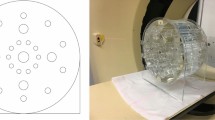Abstract
The computer-aided algorithms are becoming indispensable in the field of digital subtraction angiography for better subsequent clinician diagnosis and feature extraction. These tools find widespread application for localization and highlighting potential malfunctioned sites and abnormal vascular pathology. For this purpose, an enhancement filter function based on Hessian matrix is often employed which produces a response close to ideal enhancement function in the literature. However, while predicting the abnormal pathology, both vessel and osseous details are elementary to patient diagnosis and treatment. In this manuscript, with an aim to parallelize the visualization of enhanced vessel details and osseous information for quick diagnosis, an image fusion algorithm is proposed based on the pre-enhancement of source images which generates highly pleasant visual results free from noise and ghostly artefacts outperforming the ten other image fusion techniques. Besides, this study presents a potential research challenge of disagreement between objective and subjective evaluation of fused image.





Similar content being viewed by others
References
Zhang G, Zhiming C, Fanzhang L, Jian W (2009) DSA image fusion based on dynamic fuzzy logic and curvelet entropy. J Multimed 4(3):129–136
James AP, Dasarathy BV (2014) Medical image fusion: a survey of the state of the art. Inf Fusion 19:4–19
Van den Elsen PA, Pol E-JD, Viergever MA (1993) Medical image matching—a review with classification. IEEE Eng Med Biol Mag 12(1):26–39
Jerman T, Pernuš F, Likar B, Špiclin Ž (2016) Enhancement of vascular structures in 3D and 2D angiographic images. IEEE Trans Med Imaging 35(9):2107–2118
Jerman T, Pernuš F, Likar B, Špiclin Ž (2016) Blob enhancement and visualization for improved intracranial aneurysm detection. IEEE Trans Vis Comput Graph 22(6):1705–1717
Jerman T, Pernuš F, Likar B, Špiclin Ž (2015) Beyond Frangi: an improved multiscale vesselness filter. In: Medical imaging 2015: image processing, International Society for Optics and Photonics, vol 9413, p 94132A
Nencini F, Garzelli A, Baronti S, Alparone L (2007) Remote sensing image fusion using the curvelet transform. Inf Fusion 8:143–156
Lewis JJ, O’Callaghan RJ, Nikolov SG, Bull DR, Canagarajah N (2007) Pixel-and region-based image fusion with complex wavelets. Inf Fusion 8:119–130
Ma J, Chen C, Li C, Huang J (2016) Infrared and visible image fusion via gradient transfer and total variation minimization. Inf Fusion 31:100–109
Li S, Kang X, Hu J (2013) Image fusion with guided filtering. IEEE Trans Image Process 22:2864–2875
Burt PJ, Adelson EH (1983) The Laplacian pyramid as a compact image code. IEEE Trans Commun 31:532–540
Liu Y, Liu S, Wang Z (2015) A general framework for image fusion based on multi-scale transform and sparse representation. Inf Fusion 24:147–164
Naidu V (2011) Image fusion technique using multi-resolution singular value decomposition. Def Sci J 61:479–484
Zeeuw P (1998) Wavelets and image fusion. CWI, Amsterdam
Shreyamsha Kumar BK (2015) Image fusion based on pixel significance using cross bilateral filter. Signal Image Video Process 9(5):1193–1204
Ma J, Ma Y, Li C (2019) Infrared and visible image fusion methods and applications: a survey. Inf Fusion 45:153–178
Toet A (1989) Image fusion by a ratio of low-pass pyramid. Pattern Recognit Lett 9:245–253
Dogra A, Goyal B, Agrawal S (2017) From multi-scale decomposition to non-multi-scale decomposition methods: a comprehensive survey of image fusion techniques and its applications. IEEE Access 5:16040–16067
Weickert J (1998) Anisotropic diffusion in image processing, vol 1. Teubner, Stuttgart
Perona P, Malik J (1990) Scale-space and edge detection using anisotropic diffusion. IEEE Trans Pattern Anal Mach Intell 12(7):629–639
Dogra A, Goyal B, Agrawal S (2018) Osseous and digital subtraction angiography image fusion via various enhancement schemes and Laplacian pyramid transformations. Future Gener Comput Syst 82:149–157
Dogra A, Goyal B, Agrawal S, Ahuja CK (2017) Efficient fusion of osseous and vascular details in wavelet domain. Pattern Recognit Lett 94:189–193
Zhang Q, Shen X, Xu L, Jia J (2014) Rolling guidance filter. In: European conference on computer vision, Springer, Cham, pp 815–830
https://www.mathworks.com/matlabcentral/fileexchange/67703-image-processing-dataset-for-color-grey-image-fusion–image-blending–image-denoising–enhancement. Accessed 28 August 2018
Dogra A, Agrawal S, Goyal B, Khandelwal N, Ahuja CK (2016) Color and grey scale fusion of osseous and vascular information. J Comput Sci 17:103–114
Funding
This work is supported by University Grant Commission, Government of INDIA.
Author information
Authors and Affiliations
Corresponding author
Ethics declarations
Conflict of interest
The authors declare that there is no conflict of interest regarding the publication of this paper.
Additional information
Publisher's Note
Springer Nature remains neutral with regard to jurisdictional claims in published maps and institutional affiliations.
Rights and permissions
About this article
Cite this article
Dogra, A., Goyal, B., Agrawal, S. et al. Enhanced vascular and osseous information fusion: disagreement of quantitative and qualitative analysis. Neural Comput & Applic 32, 15885–15895 (2020). https://doi.org/10.1007/s00521-019-04259-w
Received:
Accepted:
Published:
Issue Date:
DOI: https://doi.org/10.1007/s00521-019-04259-w




